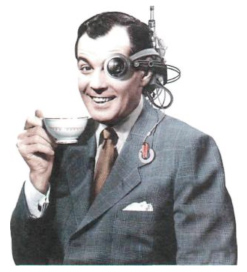Scientific American Forum by Philippe Kahn, July 2013 Issue
Commentary on science in the news from the experts
A prolific inventor argues that we are on the cusp of an explosion in truly useful and unencumbering wearable devices
If you’re wearing a sleep monitor that is awkward and gets in the way, you might choose not to use it, and even if you do, the act of wearing it might change the way you sleep. It’s a bit like the Heisenberg uncertainty principle: the observer changes the outcome of the experiment. If asleep monitor has electrodes and wires that look like something from Frankenstein’s lab, you might not wear it consistently, and the information it gathers and reports may be compromised.
In recent years wearable technology’ has improved drastically. Improvements in sensor technology are now making it possible to design wearable devices that are so noninvasive that we can forget we are wearing them. Inventors – myself included – are working to make sensors more accurate, smaller, with longer battery lives. The goal is to deliver great user experiences.
Sensors are rapidly evolving in important ways. As engineers, we are packing more capabilities into each sensor. We are coupling accelerometers with gyroscopes, shrinking them in size and decreasing their power consumption. We are also using new sensor-fusion algorithms that can make sense of all the data flowing through and among the sensors. For example, the Jawbone UP wristband, a 24-hour monitor (for which my team created hard-ware reference designs, firmware and other components) analyzes sleep and waking activity patterns. It is designed to be a step toward the “quantified self,” which will improve Ms. and Mr. Everyone’s health. It is meant to be fashionable and rugged, so you can keep it on in the shower. When you check your sleep patterns, you see your sleep, not the effects of wearing some strange device that disrupts your sleep.
Today’s smartphones include sensors that capture images, motion, magnetic fields, geographical position and proximity, but they tend to use those sensors individually. With sensor-fusion technology’, my phone could sense, say, that I’m in my car, which improves my experience significantly because my phone can automatically activate those functions that are most relevant to the situation. When I get out of my car and go jogging, or go to sleep, or do pretty much anything, my phone becomes a “context chameleon” and adapts automatically. A device like an iPhone, a SmartWatch or Google Glass could become my own personal communicator, integrated with my other wearable devices.
The technology behind such advances has existed for quite a while. Ten years ago we started developing the end-to-end components, power management systems, recommendation generators and other building blocks of the Jawbone UP wristband. Our original design back in 2005 had the wristband wirelessly synchronize with the phone and use the phone display in real time. Yet Bluetooth low-energy technology necessary to preserve battery life on the device is maturing only now. Just as it took 15 years after the invention of the camera phone for it to become ubiquitous, we arc now likewise on the cusp of ubiquitous wearable devices that serve a wide array of functions.
Some of the most promising applications of wearable technology may be in the monitoring, prevention, treatment or even cure of medical conditions. For people with chronic conditions such as obesity, sleep apnea, diabetes, heart disease or Alzheimer’s disease, wearable medical devices can make a huge difference in their quality of life and provide a scalable way to help control epidemics. They present a unique opportunity to tie into a new generation of therapies, including much more efficient personalized prescription dosages and delivery. For instance, a diabetic patch that releases medicine hand in hand with an advanced activity band provides a personalized and optimal dosage while improving both the therapies and the outcomes – the next step after insulin pumps. We now have the opportunity to revolutionize many people’s health with our intellectual property and technology and provide a scalable solution to a planetary challenge. PK
SCIENTIFIC AMERICAN ONLIlNE
Comment on this article at ScientificAmerican.com/jul2013
